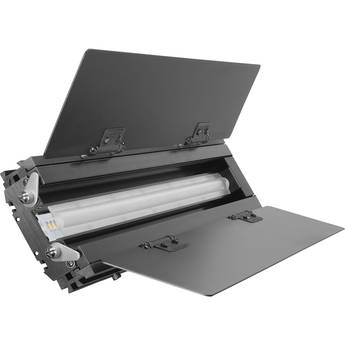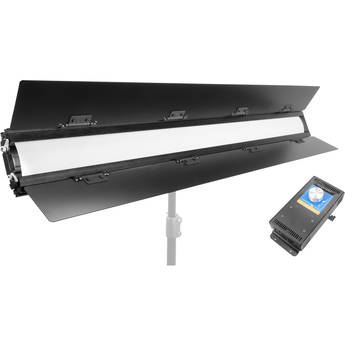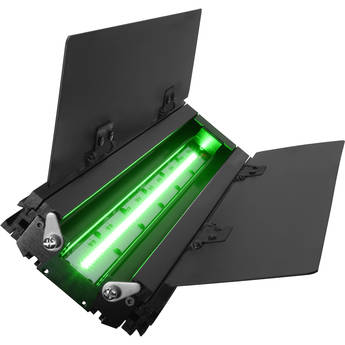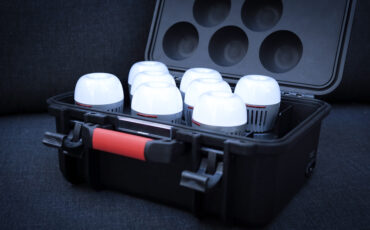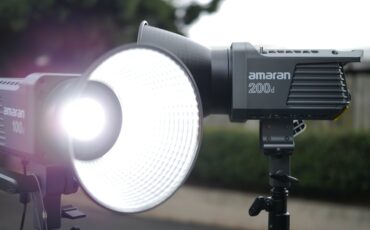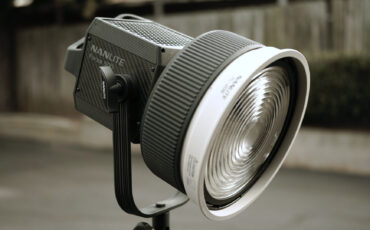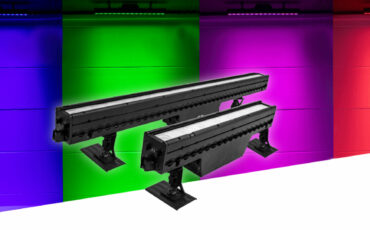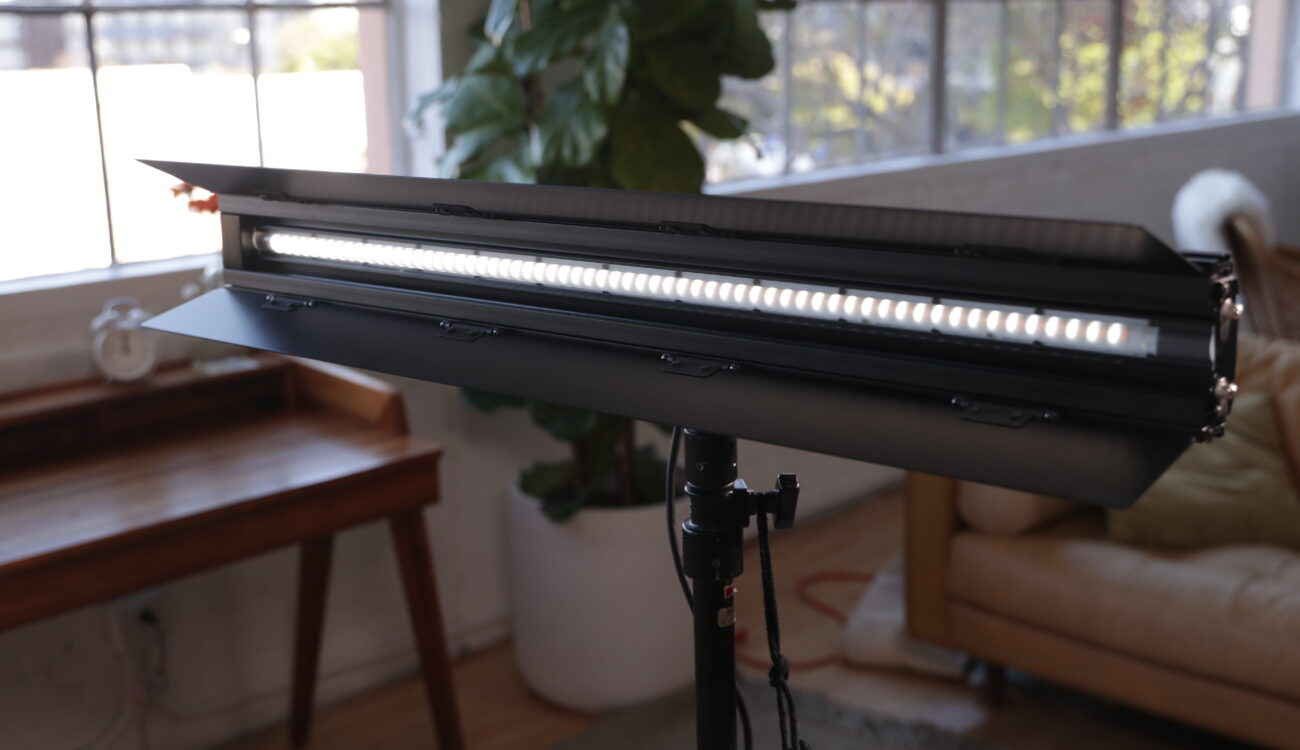
Part of our job at CineD is scouring the corners of the industry for genuinely unique lighting fixtures. The aptly named Bladelight from FloLight is undoubtedly one of these. They are available in both bi-color and daylight variants.
By creating hard and precise cuts of light, this series of lights is best compared to what Joleko and Dedo light fixtures do. The only difference is that Bladelights have the appearance and form factor of a small kino and are entirely LED. Confused by this wild hybrid description for a light? So was I, and that’s precisely why I wanted to do this field review. For this review, FloLight kindly sent me three fixtures: an 18″ bi-color, 18″ daylight, and a 36″ daylight.
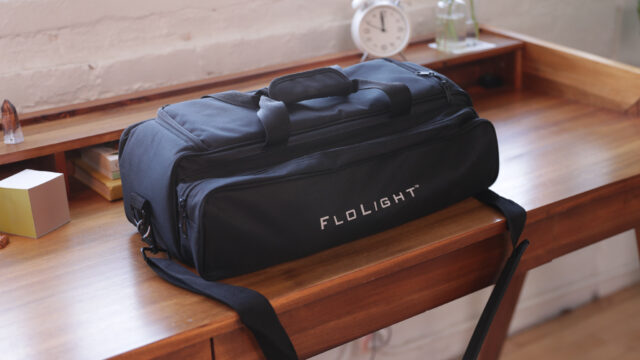
All three lights ship in soft cases and can be powered either from a wall outlet or by using V / Gold Mount batteries. While the soft cases may not offer much protection in the event of a pitching crew van or grip truck, that’s almost beside the point, because the lights feel like they’re made from solid metal – to the point where I doubt anything short of driving over them would put these fixtures out of commission. In short, these lights are solid.
First impressions of the Bladelight
A nice touch is the ability to change the beam angle and diffuse the light to various degrees of softness. This option expands the fixture’s usefulness, although I personally wouldn’t think of the Bladelight as the light for every single use case, and that’s fine with me. Use it as an edge light, for a green screen or for very precise cuts of light in your scene. If what you need is a soft key light, there are other fixtures on the market. Keep in mind that the Bladelight really exists in a category of its own.
ARRI Lighting Systems Control
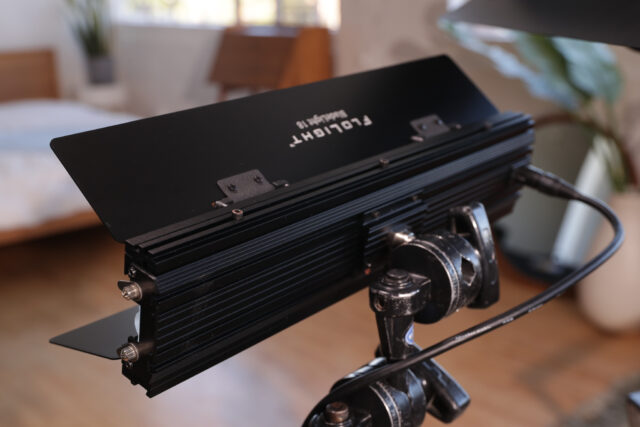
A single line of COB (Chip on Board) LED diodes runs the length of the instrument, and this is the primary distinguishing feature of these lights – I can’t think of any other LED instruments with a single strand of LED diodes like these. Every production I brought these lights on, the Gaffer and Key Grip would inevitably gather around, as the design is certainly attention-grabbing in a market dominated by 1×1 LED panel lights of all sorts and descriptions.
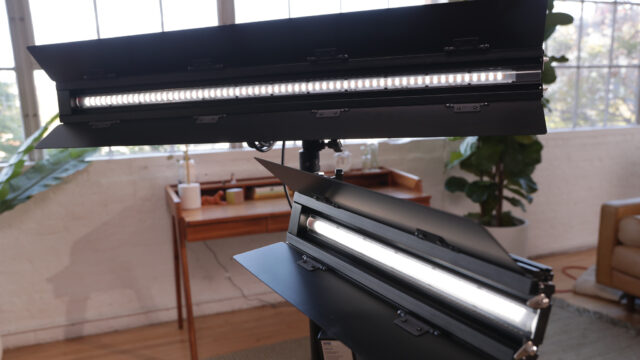
The Bladelight in use
For this review, I shot several interviews for Australian television against green screen as well as a digital project for Nerdist and Ubisoft to promote the video game “Watch Dogs: Legion.” The visual aspects of the interviews are still under NDA, but the digital project is fair game for viewing.
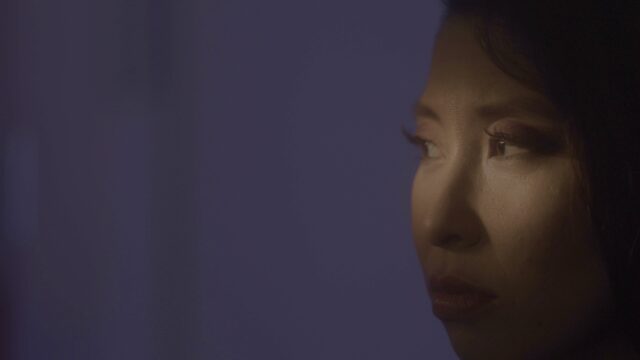
The video begins with a specific shot (see the image above) that relies heavily on the 18″ Bladelight to illuminate actor Erika Ishii‘s eyes while keeping the rest of the image darker. Below is a quick BTS image of the Bladelight rigged up.
You can view the full video here if you wish.
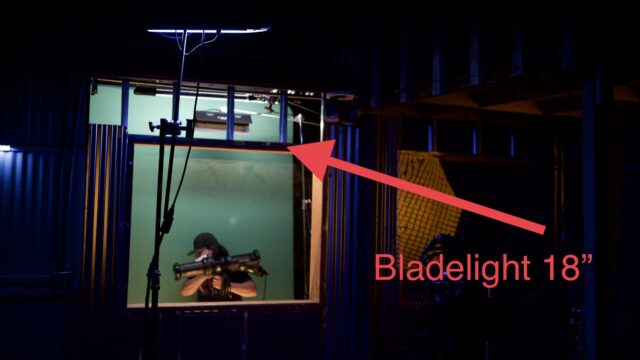
The Bladelight is particularly useful for lighting green screens as it casts a wide, even and very controllable beam of light. Knowing this, FloLight have created a Bladelight that emits Chroma Green color for precisely this application.
Here’s the type of finite beam control you can get out of the Bladelight when it’s pointed at a seamless section of paper from three feet away.
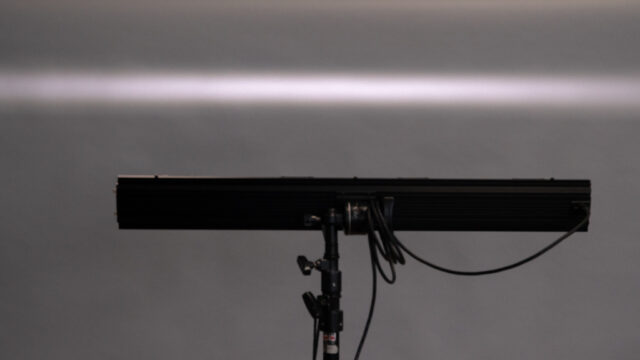
Even in the image above (compressed for the web), you can see that the light dissipates slightly at either end of the line of light (a.k.a “the blade”). I would love to see a metal flag accessory, that connects on either end of the fixture, so a clean endpoint of the light beam is visible. Of course, two pieces of gaff tape will create siders and block unwanted spill, too.
I wish I’d had product shoots scheduled during my time testing the Bladelight fixtures, because I think it would do well on this type of shoot. As is often the case with shooting product, lighting realism isn’t the goal. What you are trying to capture are interesting or key parts of the product, and for this, the Bladelight would be perfect.
Note: I debated whether it made sense to test output lumens on a fixture best used with an extremely narrow beam. In the end, I decided these results wouldn’t be helpful when gauging the quality of this product since a narrow beam automatically equates to disproportionally high lumen output. However, my testing did show a Color Rendering Index score in the mid-90s on all three fixtures – which is in the excellent range.
Accessories and control
The best lights are versatile and can perform in a variety of situations on location. At first glance, the Bladelight seems almost too specialized to fall into this category. It is marketed heavily as a device, that creates a clean cut of light. Still, the manufacturer has provided a variety of accessories resulting in expanded use cases for this fixture.
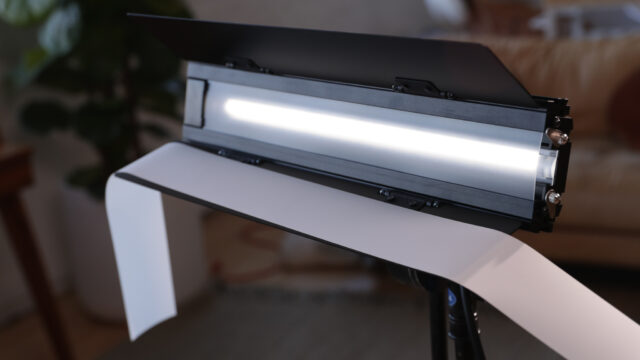
The kits arrive with different pre-cut plastic diffusion gels (LEE Zircon Diffusion 810) and “lenses”, that further focus the light to either 20 degrees or a 60-degree beam angle. The fixture has a 120-degree beam angle when the mounted barn doors are spread out.
Controlling both the bi-color and daylight-only version of the Bladelight is simple. The controller (pictured below) allows you to step through different intensity levels from 1-100%. You can change Kelvin temperature by briefly holding down the silver knob. No Bluetooth or DMX capabilities here – although the manufacturer has mentioned that the Bladelight is Bluetooth-capable, and a control application might come in the future.
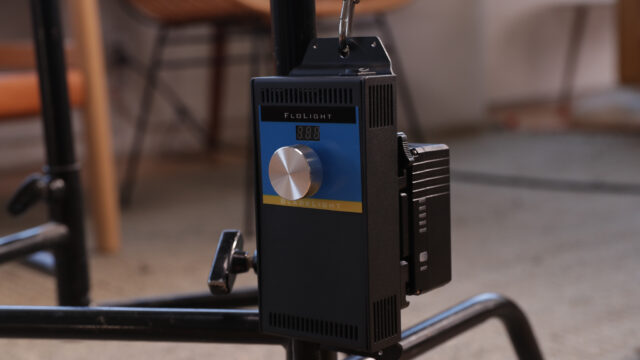
The Bladelight is available in a DMX-capable version that I didn’t have for this review, and you can find that version here.
Conclusion
The Bladelight is a quirky fixture, but in this case, quirky doesn’t mean bad – it’s just highly specialized toward some particular goals, and as such, it doesn’t really have any competitors. Again, as mentioned above, if you’re lighting a green screen or a product, or looking for specific cuts of light (perhaps as a hair light), then, in my opinion the Bladelight is absolutely right for those applications. It’s easy to use, features an all-metal indestructible build and can perform like a Leko in certain situations or in a pinch, be softened with included diffusion and a wider beam angle lens to become something entirely different.
At a cost of $999 for the 36″ Daylight non-DMX version this light lands somewhere in the middle when it comes to price – not too cheap or too expensive. It is worth noting, that these lights are on the heavier side (13lbs for the 36″ version), but that weight is coming from an all metal exterior that feels pretty darn unbreakable. So, the weight/quality trade-off is worth it in my opinion, when you consider these fixtures will likely last for years of obligatory on-set or rental house abuse.
FloLight has created a light, that certainly stands on its own, and in an LED lighting market, occasionally struggling with sameness, there’s lots to appreciate about an engineering approach that seeks to create something different.
What do you think of the Bladelight? Can you think of a different use case for it, that I didn’t think of? Tell us about your experience using the Bladelight or if you’ll be adding one to your kit. Comment below!
**Special thanks to Mico Ramos for assisting with BTS images of the lights in action while filming**



